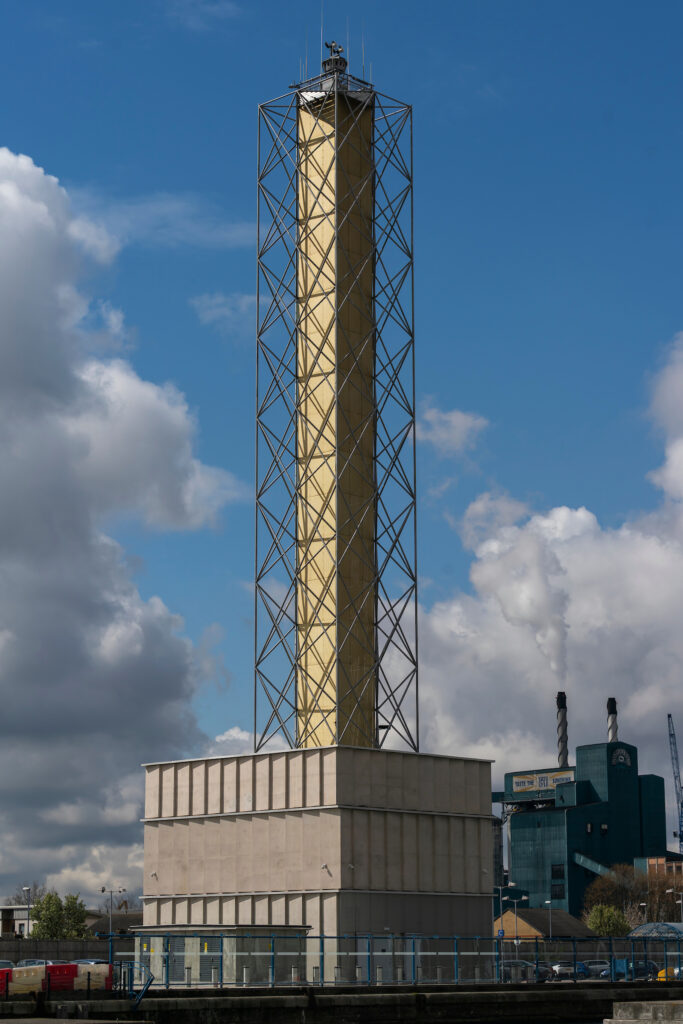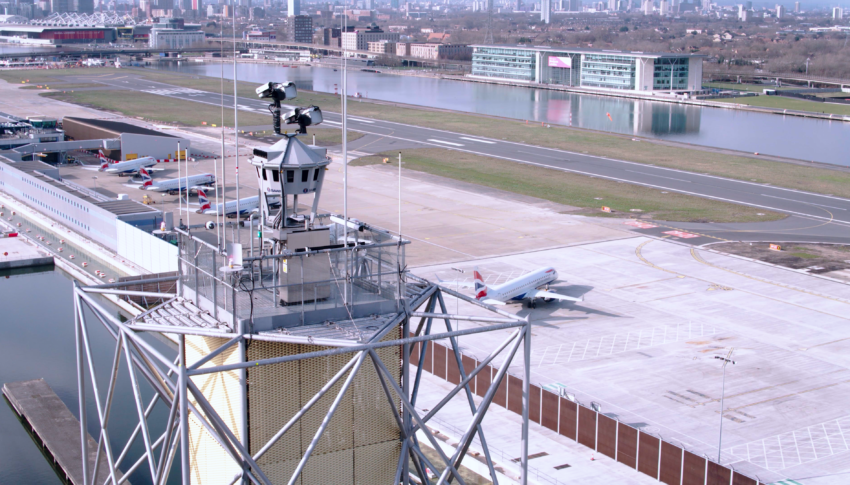With London City Airport now controlled by a remote digital air traffic control (ATC) tower over 80 miles away at the NATS centre in Swanwick comes another major step towards future digitalisation of critical, complex aviation infrastructure.
Using technology pioneered by Saab’s Digital Air Traffic Solutions division at the tiny Örnsköldsvik and Sundsvall airports in Sweden, 360° high-definition cameras sit atop a new mast at LCY, just below pan-tilt cameras that provide the digital equivalent of focussing binoculars on a specific area.
It’s fascinating technology, and London City is a step up in scale: while it’s by no means a Frankfurt, Beijing or even LaGuardia, it’s certainly busier — at least in peak times — than other examples during its normal operations.
Previously, remote digital towers have been focussed on locations that are themselves remote, like the Scandinavian Mountains Airport in the rural borderlands between Sweden and Norway, or minor in scope, like Saarbrücken’s remote tower, which is controlled by DFS, the German ANSP, from its headquarters in Leipzig.

London, UK. 12/04/21.
London City Airport Digital Control Tower.
©Andrew Baker studio@andrewbakerphotographer.com
Going remote digital at London City is able to happen now, says Jonathan Astill, director for airports at NATS, thanks to “the maturity of the technology in terms of cameras and ultra-fast connectivity which now makes this a genuinely compelling concept. Ultimately, it allows NATS to tear up a 100 year old convention and offer our airport customers flexibility in how and where they want their air traffic control service to be delivered.”
https://www.youtube.com/watch?v=MsoxL6tMG_I
“For London City we have worked with Saab Digital Air Traffic Solutions to install cameras that recreate the view of the airfield from a location away from the airport,” Astill explains. “That gives the airport the flexibility to choose how best to make use of the airside real-estate that’s been freed up, while it gives our controllers a much-improved view of the airport and access to new ‘enhanced reality’ style image overlay tools – showing radar tags and weather data for example – to help improve safety and efficiency.”
The setup can and will be different for every airport, of course. At LCY, “it’s a 50m high mast with 16 cameras, the images from which are sent down a dedicated fibre network to our control centre in Swanwick, Hampshire, around 80 miles away,” Astill says. “For other airports, it could mean using distributed cameras all around the airport, combined with AI to give the controllers in the existing tower better views and as well as new tools that allow them to do their job even better and more safely.”
And safety is very much a focus, with redundancies designed into the systems. “We simply wouldn’t be doing this is we didn’t think it was safe and secure, which is why the system is designed with resilience baked-in, with multiple fall-backs and contingencies. For example, we have multiple, private and entirely independent connections between the airport and Swanwick,” Astill says.
Aviation is also able to benefit from the growth and increasing standardisation of safety management systems (SMS) across the industry, and especially in air traffic control, says Vincent Lambercy, chief executive officer at air traffic management consultancy FoxATM.
“Risks and challenges are managed in the standard way that ATC manages things,” he explains. “You have a safety management system in each ATC. We do the standard safety exercises that we do for every change. The SMS are now stable enough that you can just process [changes through] them. There are probably a few new hazards introduced with remote towers, but they have been managed the same way we manage all hazards.”
That expertise in safety management is critical, and it should come as no surprise that the major players in the digital tower revolution are made up of partnerships with just that kind of expertise, like Kongsberg, Indra and Avinor, Frequentis and DFS, and Saab and LFV.
“It’s not by chance that all three are a match of someone from the industry and someone from an ANSP,” Lambercy says, “because going remote — there is a technological part to it, definitely, but it also touches the way controllers work.”
This juxtaposition point between the technological and the human is a key intersection. “With everything digital, one of the risks and challenges is the heads-down time,” Lambercy explains, noting that “the basic work of a tower controller is to look outside and make sure everything is okay — then you give them technology to support that.”
And it’s not just supporting: it’s enhancing as well, with the opportunity to add further information, like blocks showing the flight number next to an aircraft, or using complex rules and artificial intelligence to flag up conflicts before — or in addition to — humans spotting them.
But beyond just additional information information, the systems can add functionality, like virtual stop bars and infrared cameras.
“Infrared cameras obviously have the advantage of working at night as well and in fog,” Lambercy says. “We’ve heard some feedback that sometimes the controller even prefer infrared during daytime, because the engines are such a spot on infrared that there is no doubt that there is an aircraft there if you have bad visibility with the sun in the background.”
NATS’ Astill highlights further prospective advantages: “at Heathrow we’ve been working with Searidge Technologies to understand whether a mix of cameras and artificial antelligence can help support the controllers, by monitoring the runway exit points, for example.”
“Elsewhere it could offer an airport a cost-effective contingency facility, should the physical tower be unavailable,” Astill says. “A digital tower doesn’t necessarily mean taking the controllers off site.”
Indeed, concurs Lambercy, many airport air traffic control towers are located in central, relatively inaccessible areas of the airport. Remote facilities located near or even in the airport, at landside locations, would make it much easier for ATC staff to get to and from work.
In traditional airside towers, he notes, “you need to have a car, which has to be a car allowed to drive airside, you need an airside driving licence. If all the sudden your tower can be anywhere, it can still be at the airport, but in a much easier place to reach.”
Hybrid models, with elements of digital tower technology enhancing, supplementing or reinforcing traditional towers, could also be a possibility.
NATS’ Astill is bullish about the future for this kind of tech: “London City is now the first major airport in the world to be solely controlled via a digital tower, and I suspect it may pique the interest of airports that thought this was something only for small geographically remote airfields. Looking globally, there is a lot of exciting work going on.”
Already, he says, “NATS is working the Civil Aviation Authority of Singapore to deliver a ‘smart tower’ for Changi Airport, and Hong Kong International is working on its own digital tower project, both of which are of course hugely busy — under usual circumstances — hub airports.”
Author: John Walton
Published: 3rd June 2021
Join the Challenge
We’re discussing this over in our Challenges Area – What is your opinion on the relocation of air traffic control towers from airside to landside locations, often miles away from the airport?Join the discussion





